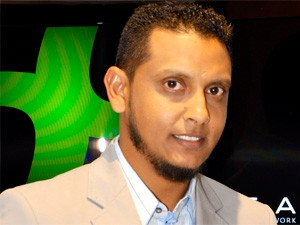
Forget about how much fibre SA has. The numbers that really matter are the ones that reflect what still needs to be connected. This is according to Reshaad Sha, chief strategy officer at Dark Fibre Africa (DFA).
Presenting on behalf of DFA at the third annual FTTH Council Africa Conference this week, Sha took a trip down telecoms memory lane, all the way back to where it all started for SA, 20 years ago.
"1994 will always be remembered as the dawn of our democracy, but it is also special in other ways. At the time, we had the SAT-2 [South Atlantic-2] cable, delivering about 526Mbps connectivity. Basically, that meant being able to download a DVD - 1994 classic Pulp Fiction, for example - in 67 seconds, using all of the capacity on that cable.
"Except, in those days, there were no DVDs and you probably didn't have a 5GB hard drive to store it on."
In 1994, he noted, SA also had about 3.6 million active fixed lines - a number that hovers around the same figure today - and about 60 000 mobile subscriptions. Back then, SA had 172 000km of fibre, according to Telkom.
"Today, we have come a long way and have made a lot of progress in our 20 years of telecoms connectivity."
Now, said Sha, SA has capacity of 11.4Tbps across the five undersea cables that land on its shores. "That is the equivalent of downloading 304 DVDs in one second. It represents phenomenal speed."
Although the number has gone up and down throughout the years, SA still has about 3.6 million fixed lines, and 180 000km of fibre today.
"But these numbers mean nothing. What is important is the 20 000-plus base stations that need to be connected. What is important is the 45 000 government buildings that need to be connected; the 700 000 businesses and over 11 million households that need to be connected - these are the important numbers. These are the numbers that will serve the market more broadly."
Future strategy
"And, when looking at the picture SA is targeting in 2024, it is not fibre that will make a difference," said Sha. "It is our mediocre gross domestic product (GDP)." By 2024, SA's GDP is projected to be $536 billion - up from $331 billion this year and $135 billion in 1994.
While some of this growth has been automatic, Sha said the next shift could not be. "It has to be based on a structured, strategic approach. And what is SA doing?" he questioned.
Sha noted SA Connect - the country's broadband policy, drawn up in March by former communications minister Yunus Carrim - was a step in the right direction, because it outlined where SA should aim to be in terms of its broadband goals. "But it is light on the steps that need to be taken to reach them."
Concluding with three invaluable steps businesses could take that would influence SA's connected future, Sha advised: "Optimal use of capital is mandatory. Whatever you spend in whatever you do, make sure it is the best use of that dollar/rand/yen. Secondly, go for connectivity among socially favoured profiles and, lastly, collaboration across the chain of this vertical industry is a must."
If businesses had to put just one of these into practice, said Sha, they would make a marked difference to the local landscape. "I challenge you to find a way you cannot measure benefit on any one of these three options, 12 months down the line."
Share